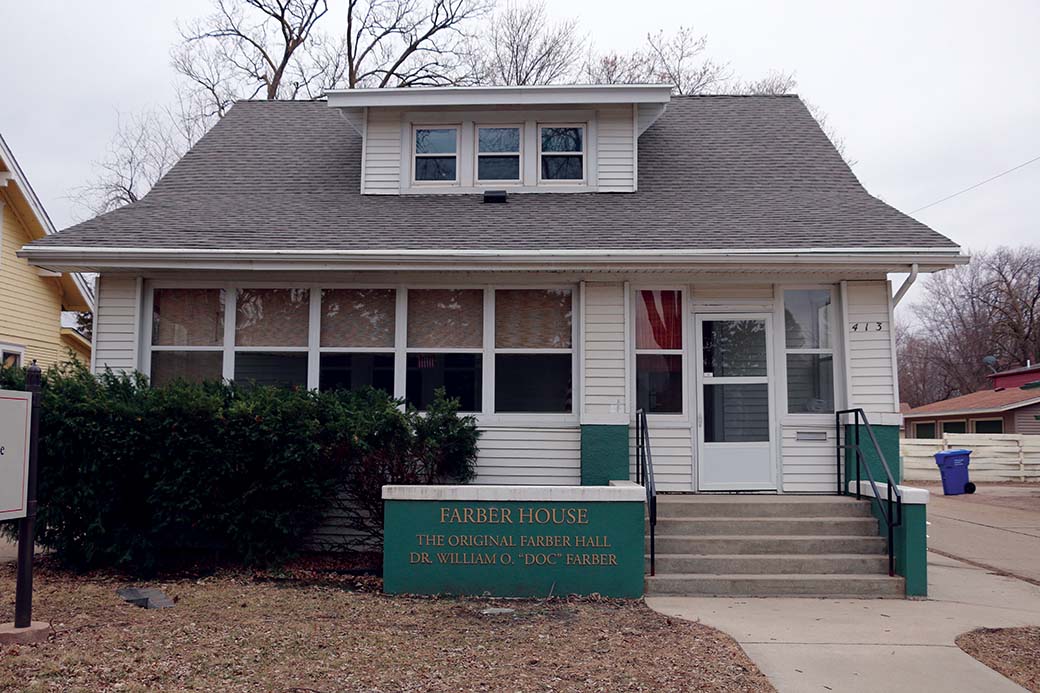
Farber House a ‘memorable legacy’ to late professor
Political science professor William “Doc” Farber was a well-known faculty member at USD. For many years he lived in a house right across the street from Slagle Hall, which has since been dubbed the Farber House.
According to the USD website, Farber’s students always came first, and the doors to both his office and his home were always open.
Farber lived in the house for many years before he died in 2007.
“Farber moved into the house in the early ‘60s because he wanted to be as close to campus as possible,” said William Richardson, director of the Farber Center and chair of the political science department. “Doc would hold seminars in his front living room for kids even after he was long retired. He would have broke students living in his basement just to make sure they could finish their degrees.”
The house was renovated as part of Farber’s estate wishes and then given to the Farber Fund and the USD Foundation, Richardson said. It was dedicated to the political science department.
Richardson said the house came with an endowment to maintain the house and pay for the house’s utility bills.
Farber’s dedication to USD was unique, Richardson said.
“You don’t really find faculty that dedicated to a university or department that they buy a house across the street so they can be readily available,” Richardson said. “That’s how Doc lived.”
The house was renovated to accommodate offices for political science faculty members and to use the basement as a
seminar room.
“We try to make it as active and useful as possible,”
Richardson said.
Ed Gerrish, an assistant professor of political science, was an undergraduate student at USD during the time Farber was still alive and living in the house, so the legacy of the house is important to him as well.
“I think it’s really important that we try to use that house in a way that’s for education, for the purpose in which he dedicated his life,” Gerrish said.
Educational opportunities

There’s currently a crime scene investigation simulation going on in the house for the criminal justice students, which is being led by the Yankton Police Department. Richardson said this is done by different people each year.
One class that’s being held in the seminar room downstairs this semester is a master’s level budgeting and financial management class, which Gerrish teaches.
Gerrish said having a class in Farber House benefits graduate students because they can swipe their student ID to get in and use computers that have specialized statistical software.
There are renovation plans through the Farber Fund to turn the basement area into a normal classroom and lab. This will mostly be used by political science and public administrations students, Gerrish said.
“I am kind of running the test run for classes to figure out what does and doesn’t work for that room,”
Gerrish said.
Richardson said the house is a good way of remembering Farber.
“The statue is probably the most visible, but the house is the second way that Doc’s legacy is on display,” he said. “There was the wonderful downstairs where he would hold court and teach students and people like Tom Brokaw would stop by, and it was a sort of a centerpiece for the alumni part of the department.”
After almost 20 years of being the director of the Farber House, Richardson said he’ll be retiring sometime this summer.
“I won’t be taking the house with me,” Richardson said. “The house stays.”
Richardson said many people have strong connections to the Farber House.
“It’s obviously got emotional attachments to all of us who knew Doc Farber,” Richardson said. “Because we spent time over there when Doc was alive and vibrant.”

